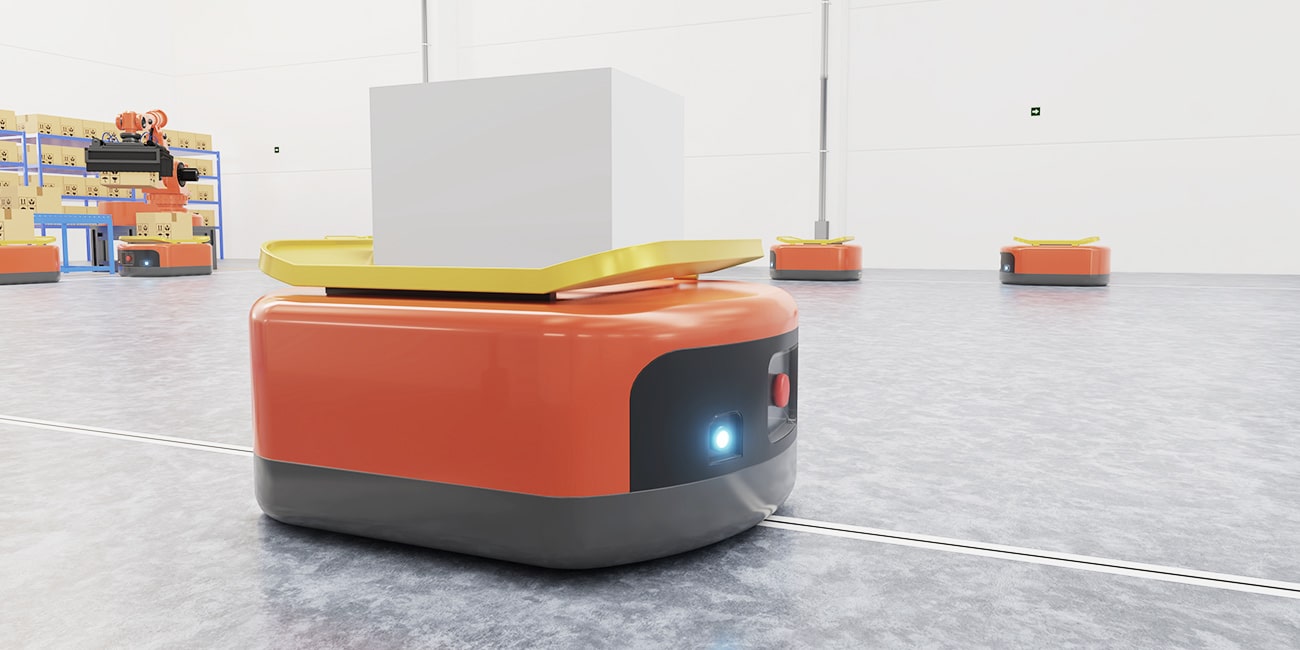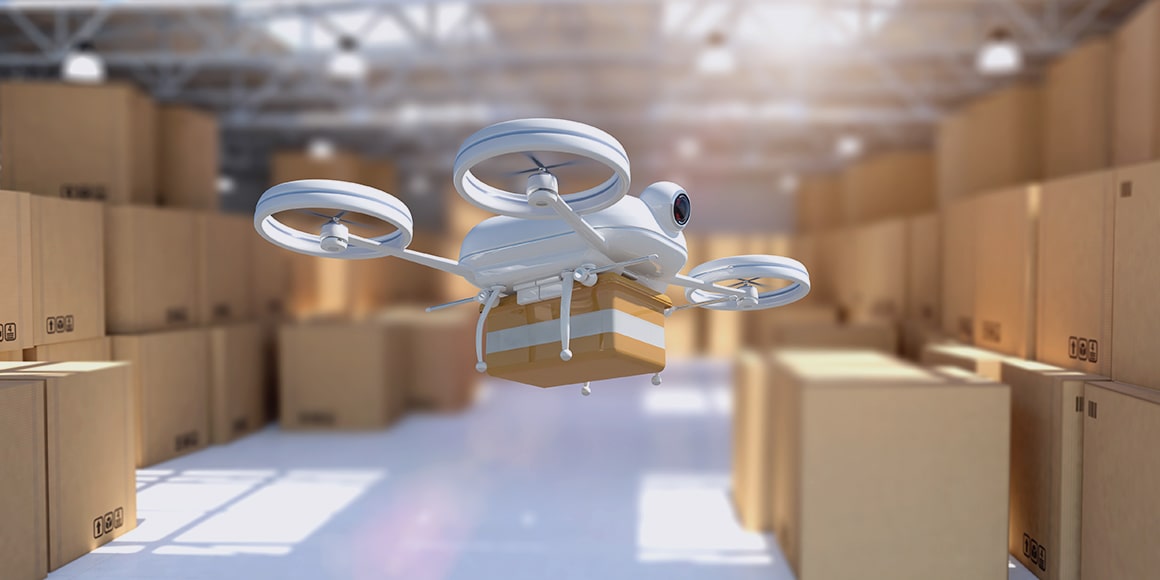
After getting through another stressful holiday season, supply chain managers may be tempted to take a break.
But the period immediately following the winter holidays can be an ideal time to implement some much-needed warehousing technology upgrades, allowing you to benefit not only next holiday season but also year-round. These changes can take months to implement, so getting started as soon as possible can make a huge difference.
In a proprietary study commissioned by USPS and carried out by SIS, 50 shippers at top organizations were surveyed:
When working with antiquated warehouse systems, shortcut fixes won’t suffice. To ensure continued success and higher efficiency, serious changes are needed, and this requires successful change management.
In one study of U.S. employees, more than one-third of respondents said projects get delayed because the full scope isn’t understood.[4]
Start Your Warehouse Tech Transformation
Read through the expert tips below to help ensure success as you begin leading your warehouse technology upgrade.
1 Clearly identify the changes required.
While you may already be very familiar with all of the technology upgrades needed for your warehouse, your employees will need—and deserve—step-by-step guidance to fully understand and support the changes. You can achieve this by first taking the time to identify the exact changes required.
After conducting a thorough operations assessment—during which you should carefully analyze current productivity and service levels in order to identify areas for improvement—pinpoint any relevant patterns and trends. Then decide what type of technology will be most effective for bringing about the needed changes.
Once completed, conduct a detailed impact assessment to work through all possible implications—good and bad, short-term and long-term. These assessments will allow you to clearly visualize all potential effects of the technology changes, so you can be prepared for every possibility, plan accordingly and feel confident when eventually communicating the changes to workers.
When researching the various cutting-edge tools and technologies available for implementation, you may consider looking into the following popular upgrades:
- Internet of Things (IoT) — By connecting all devices and equipment within a warehouse, allowing them to “communicate” with one another, managers can easily get a big-picture view of efficiency, productivity and performance, analyzing data in real time.
- Automated picking tools — With robotic or semi-robotic equipment, repetitive warehouse picking tasks can be done automatically, creating faster, safer and more efficient processes.
- Collaborative robots (co-bots) — Acting as assistants to human workers, these sophisticated robots are especially useful for very repetitive, monotonous or potentially unsafe tasks. Rather than replacing humans, co-bots are designed to work alongside your employees.
- Warehouse management systems (WMSs) — WMS software applications allow you to optimize warehouse operations, automating vital planning, organizing and staffing functions, among many others.
- Automated guided vehicles (AGVs) — These portable robots make it quick and easy to move inventory within a warehouse. When connected to a WMS, AGVs can even keep track of your inventory automatically, freeing up employee time to focus on other important tasks.
- Virtual reality (VR) — Increasingly popular in training modules, VR allows workers to immerse themselves in digital experiences that show what it will be like to use new tools or equipment—all through the use of a portable headset.
- Augmented reality (AR) — Another cutting-edge training tool, AR blends the real world with the digital, allowing realistic, digital versions of new tools, devices or equipment to be superimposed over employees’ existing workspaces.
- Radio-frequency identification (RFID) — With RFID, chips or tags with an electromagnetic signal are attached to items that will be sent out for shipment, allowing their route to be tracked and recorded automatically, cutting down on time-consuming, expensive errors.
Warehousing upgrades can have far-reaching benefits. For instance, in the commissioned SIS survey:
No matter what kind of technology you’re planning to implement in your warehouse, it’s crucial that every step of the process be laid out in detail ahead of time.
Back to Menuarrow_right_alt2 Create a detailed plan of action.
Any kind of shift in the workplace—good or bad—can be very stressful for employees; it’s important that you create a solid plan of action for the tech integration required so you know exactly how to fill them in on the coming changes.
Build a detailed road map that addresses the scope of change, key objectives, main benefits, process changes, new tools and technology to be implemented, and costs. The more detailed your plan, the easier implementation and onboarding will be.
Remember that not all tech integrations will be carried out in the same way or met with the same employee reactions. “Cool” technologies such as voice picking systems will be much easier and quicker to implement in your warehouse than a major software overhaul. Be realistic about the amount of time, effort and training that will be required for the specific changes you’re considering.
Focus on concrete measurables and targets so you can accurately gauge success down the line, defining both how you will achieve success and how you will measure it. Narrowing down your key performance indicators (KPIs) will help you stay accountable and make it easy to demonstrate progress to stakeholders. Setting solid KPIs will also help you see what’s working and what’s not, so you can make adjustments as needed.
The type of KPIs you choose will depend on your specific warehousing needs and goals, but a few common change-management metrics are listed below:
- Adherence to timeline
- Speed of deployment
- Employee engagement rates
- Employee complaints and questions
- Team requests for technical support
- Employee use of analytics and statistics throughout operations
Create a plan far in advance so you have enough time to execute the changes with precision and care. Considering that 68% of survey respondents said it takes them between three and nine months to implement new technology so that it doesn’t interfere with the holiday season, you’ll want to ensure you have ample time to prepare.[8]
Back to Menuarrow_right_alt3 Involve the entire team.
Once the areas for improvement have been identified, a solid plan of action is in place and management is on board, workers should be let in on the changes. Clear, thorough and “human” interaction is paramount for success here. Create a cohesive front with management, and have higher-ups model the new behaviors, habits and processes.
Remember to embrace the change cycle—the period during which employees will process new warehousing tech changes and learn to accept them in their day-to-day jobs. This may not happen as quickly as you would like, but with the right attitude and encouragement, workers will feel empowered to take ownership of the warehouse upgrade, rather than feel it was forced upon them.
“
People are naturally reluctant to change. It’s uncomfortable.[9]
Be prepared for some resistance. Workers may be intimidated by the changes, worried that the technology will “take over” their jobs or simply frustrated by having to learn new systems. If this occurs, respond in a way that’s helpful, personal and understanding. Make it known that you’re all on the same team and that you’ll all be adjusting together to the upgrades.
Back to Menuarrow_right_alt4 Communicate the benefits clearly.
Creating a cohesive narrative around the warehousing tech changes being implemented—and the benefits and value they will bring for the team as a whole—will help ensure success in the long run.
Assure your employees that the changes will be good for each team member, as well as for the company as a whole, allowing for continual growth. This will encourage workers to take pride in the upgrade, feeling motivated and excited for the chance to move the company—and their own skill sets—into the future.
If you have implemented initiatives in the past that did not succeed, some workers may wonder if the warehouse will soon be suffering a similar fate. To keep morale high while maintaining transparency that will help build trust, explain why those previous changes failed and what management has learned to do differently to help ensure success. In this way, the new technology upgrades can be framed as a saving grace, preventing future inconveniences and setbacks.
However, not all companies recognize the importance of establishing a compelling, clear narrative. In one survey of U.K. and U.S. companies, only 24% of respondents said communicating strategy and goals to employees was one of the most critical steps for ensuring a successful digital transformation.[10]
Be sure not to force positivity; some resistance, stress and skepticism from workers are to be expected in the face of change. If a change will in fact make some aspect of employees’ jobs harder, acknowledge what parts of their duties will be more challenging and then speak directly to the various resources that will be made available to help with the transition.
Make it clear that although you’re excited about the changes ahead, you also understand workers’ concerns and are there to answer any questions they may have. Clearly outlining goals and the metrics for success will help employees feel directly involved in the shift while ensuring they understand the reasoning behind the change.
“
The most successful companies start with that vision of where they want to go, and then they think very clearly about how that alters what they have to do and how they do it.[11]
If you notice workers still struggling with or resisting the changes weeks into the shift, schedule one-on-one check-ins with your employees so you can address their concerns directly or provide extra assistance.
Being clear about how the changes will improve employees’ day-to-day jobs and being up-front about the amount of training required will help establish trust between you and your team, which is essential during times of change and upheaval.
Back to Menuarrow_right_alt5 Invest in comprehensive training.
In-depth training will help employees feel confident in the warehousing tech changes and more at ease with the shifts in their daily duties. Try to complete as much training as possible ahead of actual implementation to create a smooth transition, and break up training into small chunks, making it less overwhelming for your workers—as well as more manageable for yourself.
More than half of survey respondents said that training staff was the biggest obstacle in implementing new tech, “hands down.”[12]
Ensure that training does not interfere with workers’ ability to do their usual jobs; when training cuts into day-to-day duties or makes it difficult to complete jobs on time while maintaining high quality, resentment and frustration may result, in turn leading to shoddy work.
To get workers excited about the upgrades and help boost engagement, consider utilizing gamification and simulation training. Gamification involves integrating games or gamelike elements into training to encourage participation, while simulation allows workers to carry out tasks in a virtual environment that looks just like their actual workspace. Getting employees involved is crucial, as continued success will ultimately depend on your workers.
Gamification and simulation training can help immerse employees in the new tech upgrades, allowing them to become familiar with the changes—even before they’re implemented—in a way that’s highly engaging and encourages exploration.
Even something as simple as leaderboards can motivate workers and create a more dynamic work environment. Existing company websites or apps may also be leveraged for games, driving motivation and participation.
At the other end of the spectrum, sophisticated technologies such as virtual reality can create immersive, three-dimensional, computer-generated experiences that mirror real-life environments, allowing workers to get a firsthand look at how they will be interacting with new warehousing technology. In some retail settings, VR is being used to simulate holiday crowds—complete with all the sights and sounds workers would be likely to experience.
Augmented reality, as well, is becoming increasingly popular for warehouse training. Blending digital and physical worlds, AR allows images to be superimposed over real-life workspaces, with the simulations viewed via a headset. With this cutting-edge technology, employees can actually get a feel for the new tools and tech they will be using.
Back to Menuarrow_right_alt6 Analyze success metrics regularly, keeping stakeholders in the loop.
Once new warehousing technology is up and running, the process doesn’t stop there. Progress must be measured regularly to ensure you’re meeting your goals.
An array of sophisticated tools and technologies are available to track and analyze data across the entire warehouse. Many of these tools can automate the three main elements of the data life cycle: data integration, data management and query performance optimization.
Implementing a big data system can make it easier than ever to analyze very large or complex sets of data—and this is especially useful for shedding light on patterns and trends relating to human behavior.
The popularity of big data is only increasing in the world of warehousing:
Look for patterns and trends; pin down areas for improvement. Success doesn’t happen overnight. Don’t get discouraged if numbers don’t improve right away.
If there are still major gaps between goals and performance, set intermediary goals. This allows smaller successes to be celebrated, boosting team morale.
Lastly, ensure all stakeholders are kept in the loop so everyone can work together on any needed changes in chosen metrics, how they’re measured or how they’re achieved.
Back to Menuarrow_right_alt7 Celebrate wins.
Warehousing change management can be challenging, but don’t forget to celebrate the wins—big or small. Keep employees updated on the progress being made, and get granular in the way you present these updates. Your workers are the key to success, and they deserve to be kept abreast of how their hard work has paid off.
Speak with employees one-on-one to provide personalized feedback and praise, and share concrete results and metrics to provide your team with a sense of ownership.
And as you did when introducing the scope of change and the reasoning behind it, create a compelling narrative around your successes and engage your team regularly to keep momentum going.
Back to Menuarrow_right_altManaging Change for a Future-Ready Warehouse
As warehouses look to the future—implementing new tools and technologies to increase efficiency, boost productivity and drive continual improvement—establishing a coherent change management strategy is crucial.
Beginning by identifying needed changes and forming a detailed plan of action will help create an atmosphere of confidence and enthusiasm—and will allow you to be prepared for any employee resistance that may occur.
Next, taking care to involve the entire team and outlining the benefits clearly will encourage teamwork, making the changes a true group effort rather than a mere directive to be followed. To aid in quick onboarding and boost overall morale, investing in quality training is critical as well; your employees are striving to do their best, and they deserve support that will allow them to do so.
Finally, take the time to analyze your success metrics regularly, identifying areas for improvement and celebrating wins—even the small ones. This will allow you to gauge progress as you go, keeping workers motivated and operations as organized as possible.
While the time, effort and potential setbacks involved will vary from warehouse to warehouse and industry to industry, keeping in mind the tips outlined here will help ensure ongoing success—for yourself, your company and your team as a whole.
Footnotes
keyboard_arrow_down- [1]“Warehouse of the Future,” SIS International Market Research, 2019. arrow_right_alt
- [2]Ibid. arrow_right_alt
- [3]Ibid. arrow_right_alt
- [4]“The State of Work – 2019 U.S. Edition,” Workfront, Inc., 2019, as cited by Jillian Ryan, “Digital Transformation – How Collaboration Tools and Strategies Can Align Organizations with Business Objectives,” eMarketer, Feb. 28, 2019. arrow_right_alt
- [5]“Warehouse of the Future,” SIS International Market Research, 2019. arrow_right_alt
- [6]Ibid. arrow_right_alt
- [7]Ibid. arrow_right_alt
- [8]Ibid. arrow_right_alt
- [9]Ibid. arrow_right_alt
- [10]“Busting Through Digital Transformation Roadblocks,” SnapLogic, 2018, as cited by Jillian Ryan, “Digital Transformation – How Collaboration Tools and Strategies Can Align Organizations with Business Objectives,” eMarketer, Feb. 28, 2019. arrow_right_alt
- [11]Jillian Ryan, “Digital Transformation – How Collaboration Tools and Strategies Can Align Organizations with Business Objectives,” eMarketer, Feb. 28, 2019. arrow_right_alt
- [12]SIS International Market Research, 2019. arrow_right_alt
- [13]Ibid. arrow_right_alt
- [14]Ibid. arrow_right_alt
 search
close
menu
search
close
menu



